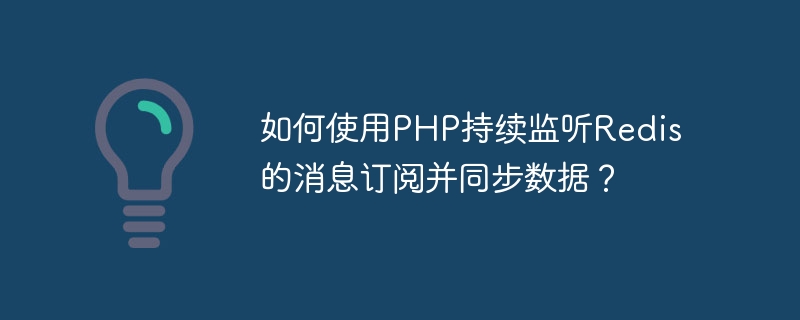

How to use PHP to continuously monitor Redis message subscriptions and synchronize data?
Redis is a commonly used in-memory database with efficient data storage and reading capabilities. As a popular server-side language, PHP can also interact with the Redis database through the Redis extension. In actual development, we often encounter the need to synchronize data in real time. In this case, we can use the message subscription function of Redis to achieve data synchronization.
This article will introduce how to use PHP to continuously monitor Redis message subscriptions and synchronize data.
pecl command or by manually downloading the source code. After the installation is complete, you need to enable the Redis extension in the PHP configuration file. subscribe method to subscribe to the specified channel. <?php
$redis = new Redis();
$redis->connect('127.0.0.1', 6379); // 连接到Redis服务器
$redis->subscribe(['channel1'], 'callback'); // 订阅频道channel1,并指定回调函数callback
function callback($redis, $channel, $message) {
// 在回调函数中处理接收到的消息
echo "Received message: $message
";
// 此处可以编写相关的数据同步逻辑,将消息同步到其他系统或进行其他操作
}In the above example, we subscribed to the channel named channel1 using the subscribe method and specified a callback function callbackTo process the received message. In the callback function, we can write logical operations such as data synchronization for the received message.
php script.php
At this time, the PHP script will continue to monitor the messages on the Redis server and perform data synchronization operations or other related processing based on the received messages.
It should be noted that the PHP script is blocked when running, that is, the script will continue to run until it is manually stopped or an exception occurs. Therefore, in actual use, the PHP script can be run in the background as a daemon process to provide the function of continuously monitoring Redis messages.
Through the above steps, we can use PHP to implement continuous monitoring and data synchronization of Redis messages. This is very useful for needs such as real-time data synchronization, and can also be used as a method of communication between distributed systems.
Summary:
This article introduces how to use PHP to continuously monitor Redis message subscriptions and synchronize data. Through the message subscription function of Redis, we can realize functions such as real-time data synchronization. Finally, a simple PHP script example is given to help readers better understand and use it.
The above is the detailed content of How to use PHP to continuously listen to Redis message subscriptions and synchronize data?. For more information, please follow other related articles on the PHP Chinese website!